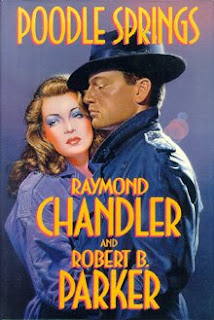Jackie Winspear’s new book, The Comfort of Ghosts, is her eighteenth Maisie Dobbs mystery, and the last. You wonder why, and the author says she imagined a narrative arc to the series, as well as the storyline in each novel, and she felt that she’d closed the circle.
I say, God bless. I’ll miss Maisie, as will huge numbers of other readers, but there comes a time. I’d rather make the choice myself. All too often, you don’t get to. I’m still sorry Philip Kerr died, when there were many more Bernie Gunther stories to come; and Bruce Alexander stood us up, before his blind 18th-century magistrate, Sir John Fielding, was ready to step down from the bench – what will happen to young Jeremy, ever on the prowl for that sinful Turkish brew, haunting Lloyd’s for both the coffee buzz and the maritime gossip?
The other side of the ledger, we have Conan Doyle famously trying to kill off Sherlock Holmes at the Reichenbach Falls, and Agatha Christie wanting to rid herself of the “insufferable” Hercule Poirot, but market demand kept them going. Speaking of, Tom Clancy shuffled off this mortal coil eleven years ago, but he keeps manufacturing product.
I’m
not a huge fan of publishers profiting off dead guys, although Ace Atkins has
done a good job with Robert B. Parker’s legacy (plus the blessing of Parker’s
widow Joan). Ace gets Spenser’s rhythm right.
You can’t say the same about Parker himself, and Raymond Chandler. Poodle
Springs isn’t a bad book, on its own; it is, however, dreadful as
I know
this sounds mean-spirited, but the most specific thing about any writer is voice.
This is usually different from story to story, sometimes inviting and
intimate, sometimes chilly, or arm’s length.
Homely and domestic can open out into the epic. Larry McMurtry and Jim Harrison are very
unalike, but Lonesome Dove and Legends of the Fall share an almost
Arthurian scale of delivery. On the
other hand, A Narrow Grave,
McMurtry’s essays, would seem to have nothing in common with Letters to Yesenin,
Probably
not, though, if they meet in heaven.
There’s an originality to any writer. We have the dictum, write the book only you can write, which can be taken in more than one way, but for the moment, let’s say it means, this book, at this moment, couldn’t be written this way, by anybody else. Somebody else could write a story about a nurse, in a combat surgery, behind the trenches, in the Great War. But only Jacqueline Winspear is going to use her character, Maisie, to speak to the trauma of Jackie’s own grandfather, still picking shrapnel fragments out of his scarred legs in his seventies. The specificity is everything. War is never over, a character in one of the Maisie books says, it lives on in the living, in the guilt of the survivors. The arc of Maisie’s story, in eighteen books, is a map of grief, and the consequences of loss. It has a shape, like something stuck in your throat. Maisie can’t be imitated, because she’s invented herself out of a certain, particular piece of the past – I mean Maisie, as a character in her own story, is self-invented, and Maisie, the character that Jackie the writer has invented, can only have become this Maisie.
Jackie Winspear says Maisie will always be taking up space in her head, even if she’s longer writing about her. I’d suggest that’s because Maisie is partly a vehicle, like any character – your characters are a way into the story – but also because she’s taken on, over time, the burden of responsibility. You might say it’s a necessary plot device, which it is; Maisie, though, has become necessary to the author. Not an avatar, or a second self, but a physical metaphor, for the gravity of hope. Maisie carries the weight. Jackie has lightened her own heart, and ours.










































